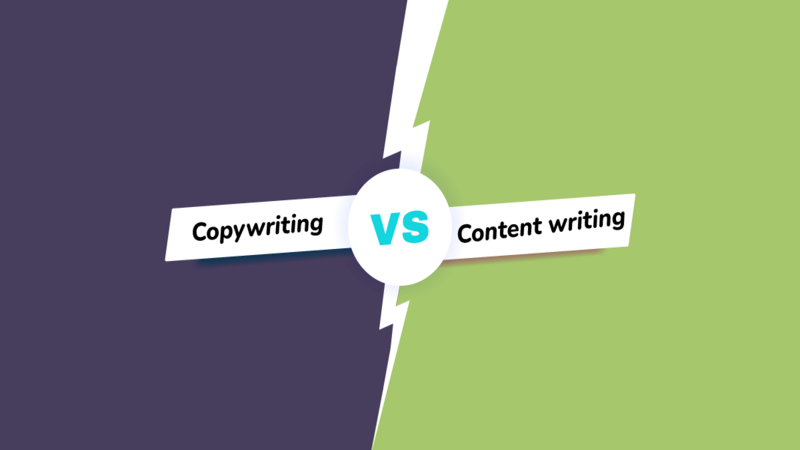In today’s digital world copywriting and content writing play important parts creating a brand voice and keeping audiences engaged. Though the two roles can sometimes overlap, they aim at different ends and require very different methods.
In this post, we’ll look at definitions and differences between copywriting and content writing, to help you figure out what kind of strategy is best for your business goals.
Various writing services are required by enterprises. For example, when they need life information that is more academic in nature than other forms of writing, they will even go so far as finding online dissertation help. But if you are to achieve linguistically powerful copy or informative articles, then delineating these two types of writing can really make all the difference.
Copywriting – A Definition
The essence of copywriting is the use of words to encourage action. Fascination for a product, desired benefits and clicking in order to buy are caused entirely by skillful contriving. It takes into account only one solution- that of involvement. Copywriters provide captivating sentences, calls to action and product descriptions that makes people take action.
In copywriting, every word is there to persuade. Whether you’re writing an ad, a landing page or a social media campaign, the copy must be directed at the reader’s unique needs and aspirations. To produce effective copywriting, in other words, it’s essential to: * Understand your target audience deeply because the language and tone will then strike a chord instantly with them. * Stimulate motivation in your reader.
What Is Content Writing
Content writing aims to deliver information to an audience through various forms of writing. Blog postings, articles, whitepapers, and social media material are all good examples. It focuses on imparting high-quality, comprehensive information that builds confidence and authority for the source.
Content writers allow readers to participate in a story for an extended period. For them, their job is more than just immediate conversion but also involves building relationships, enhancing SEO and offering insight that helps the audience understand complex topics.
Key Differences Between Copywriting and Content Writing
Purpose and Objectives
Copywriting specifically serves to achieve the purpose of persuading and turning. You want your reader to act at once, whether it’s buying something, subscribing to a newsletter or clicking a link.
Content writing, conversely, is about delivering valuable information. It aims to educate and entertain, winning the trust of your audience over time and engendering their interest in the author’s further thoughts.
Style and Tone
Copywriting is succinct, powerful and often urgent. It seeks to attract attention immediately by means of emotional triggers or compelling language.
In contrast, content writing is generally more detailed and informative. It adopts a tone that tends towards the conversational yet authoritative, trying to give depth and context to its subject matter.
Structure and Format
Copywriting often takes the form of short and punchy sentences with clear calls-to-action, presenting a direct message. You see these in ads or on mail order forms–where there isn’t much space for text.
Content writing, by contrast, tends to be more elaborate. It uses longer paragraphs and in-depth analysis. Sometimes this will involve headings, bullet points or comprehensive narratives which cover one topic entirely.
Audience Engagement
Copywriting Exclusively pursues immediate action: its purpose being to create a sense of urgency that leads people to make snap decisions.
Content on the other hand tends towards building up prolonged reader involvement. It is about teaching and informing, leading readers to explore more deeply in time with actual material
SEO Considerations
Content writing often incorporates SEO Strategies because it gains sustained organic traffic. Well-researched articles, blog posts and guides are all search engine friendly, enhancing visibility or authority.
Copywriting is focused on conversion while also using SEO techniques, particularly for landing pages and product descriptions-the very parts where targeted keywords are accountable for both traffic and conversion rates.
When to Use Copywriting vs. Content Writing
It depends on what you are trying to achieve — and whether that suits the immediate, persuasive style of copywriting. Obituaries, for instance, are not done in copy or even persuasive language! However, viral blog posts about clever new product designs such as those Steve Jobs used to make do get written in this way along with ads and product pages.
If you’re looking to build brand awareness, establish authority in your field or foster long-term relationships with clients then content writing is for you.
High quality blog posts, articles, and educational resources entice readers in for hours; and can also enhance your website SEO making your brand highly respected by its industry peers.
How They Complement Each Other
Despite their differing goals, copywriting and content writing often assist one another. A comprehensive marketing plan may include informative blog posts and feature-like articles (writing design and formatting) that promote trust, coupled with persuasive speech and email data that drives conversion to purchase (copywriting). Together, they weave an intertwined web of stories that inform while also leading the audience to act.
Successful brands understand that both must meet. That means they work hard to make both high-quality content that informs and energizes copywriting which causes customers to take action. This double barrier ensures that you have brought in a large audience and also have high conversion rates.
Real-World Examples
Consider an e-commerce brand. The company blog offers readers detailed guides, reviews which allow them to make informed decisions (content writing). Meanwhile, its landing pages and ads employ feisty, persuasive language crafted to propel a sale there and then (copywriting). This combination not only establishes brand authority but also makes money.
Similarly, in the academic world we use the same strategy. Institutions like Stanford – which I am proud to say has my BA – provide research articles and whitepapers which disseminate knowledge about their area of study and present well-reasoned arguments (content writing); at the same time using precise, targeted messages to attract applications and funding (copywriting).
Conclusion
For any successful marketing strategy, it is crucial to understand the distinction between copywriting and content writing. With copywriting, you can obtain results that are quick and certain through persuasive language combined with a compact format. Content writing provides long-term engagement by supplying valuable information freely; helpful articles on your website, for instance, or detailed blog posts that people mark to come back with some regularity.
Bringing the two together, however, will enable you to achieve an organic and multifaceted marketing strategy that truly meets your goals. Whether you are trying to improve your conversions or brand loyalty, combining both forms of writing allows you to reach out to target audiences from all directions.
Ultimately the key is in knowing your audience and then meeting them at their point of need. As long as these principles are followed, you’ll find it easy enough to sail through today’s choppy waters in digital marketing. If you have similar confusion between content writing and content marketing then just check this blog











